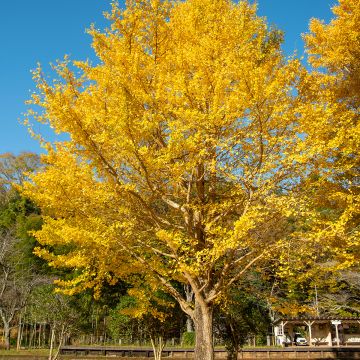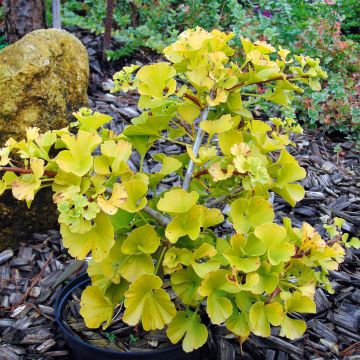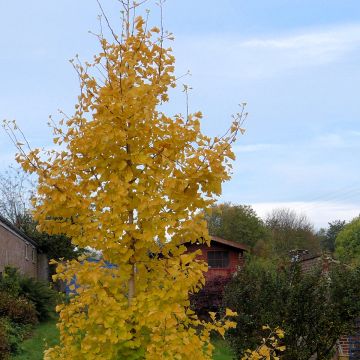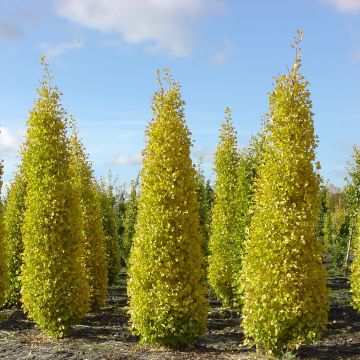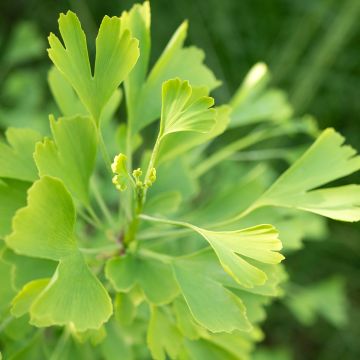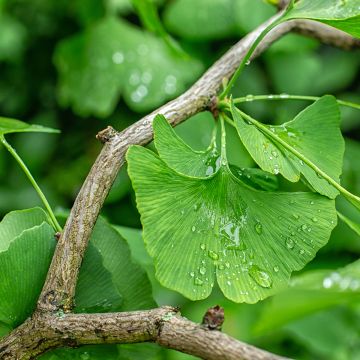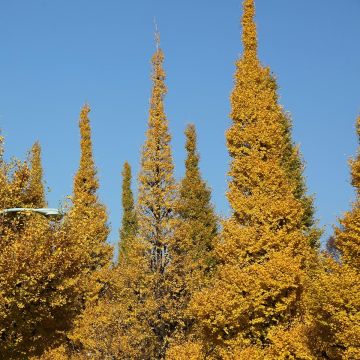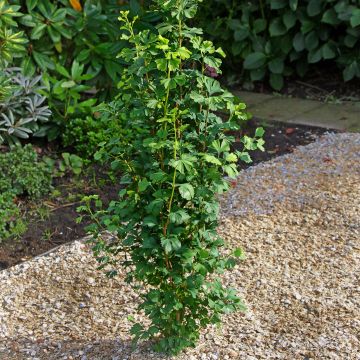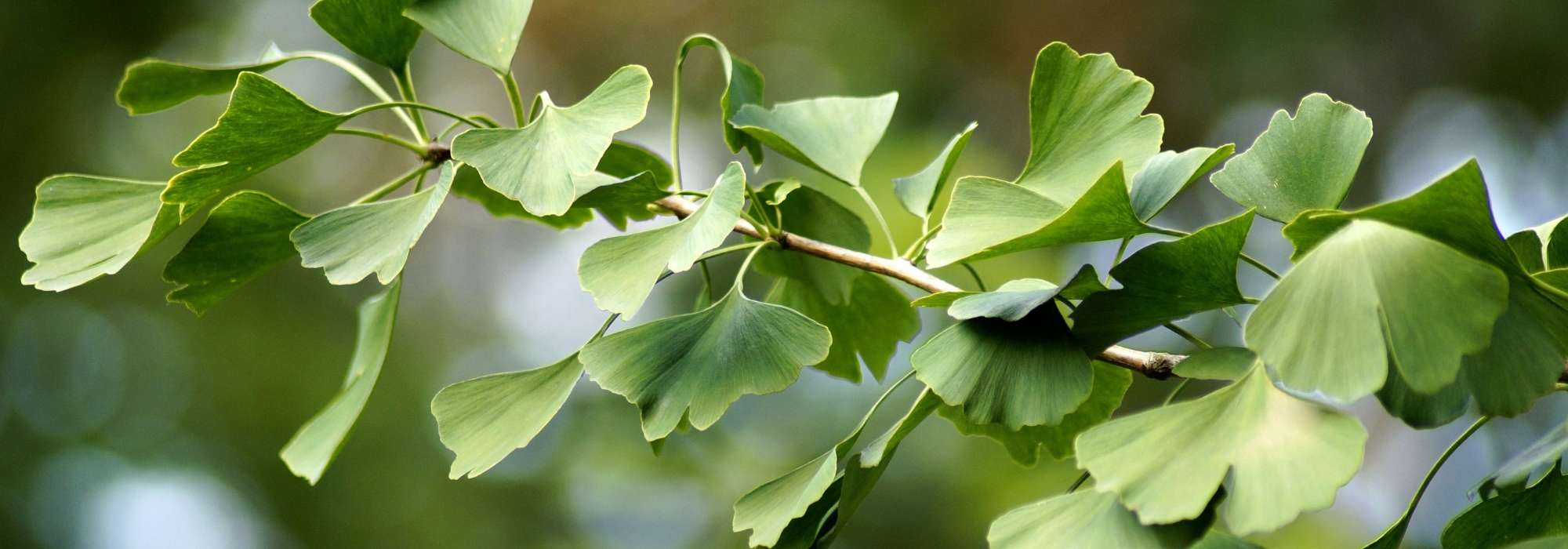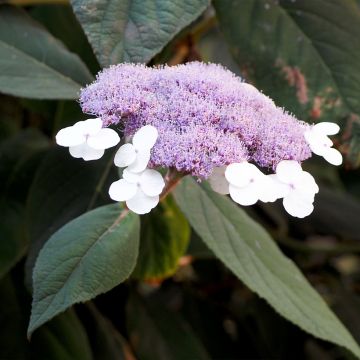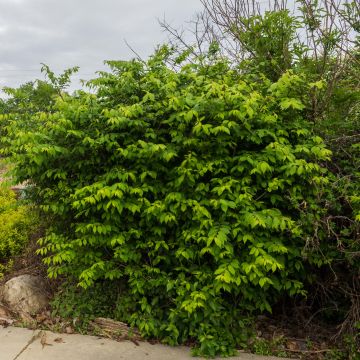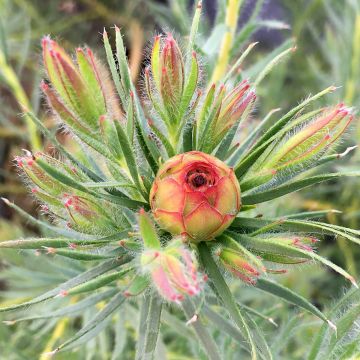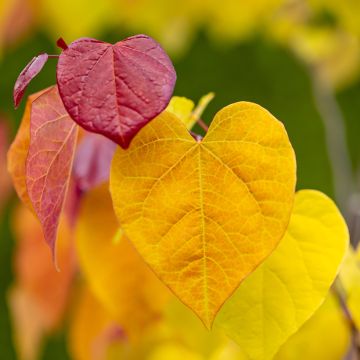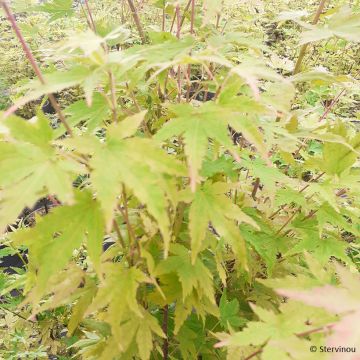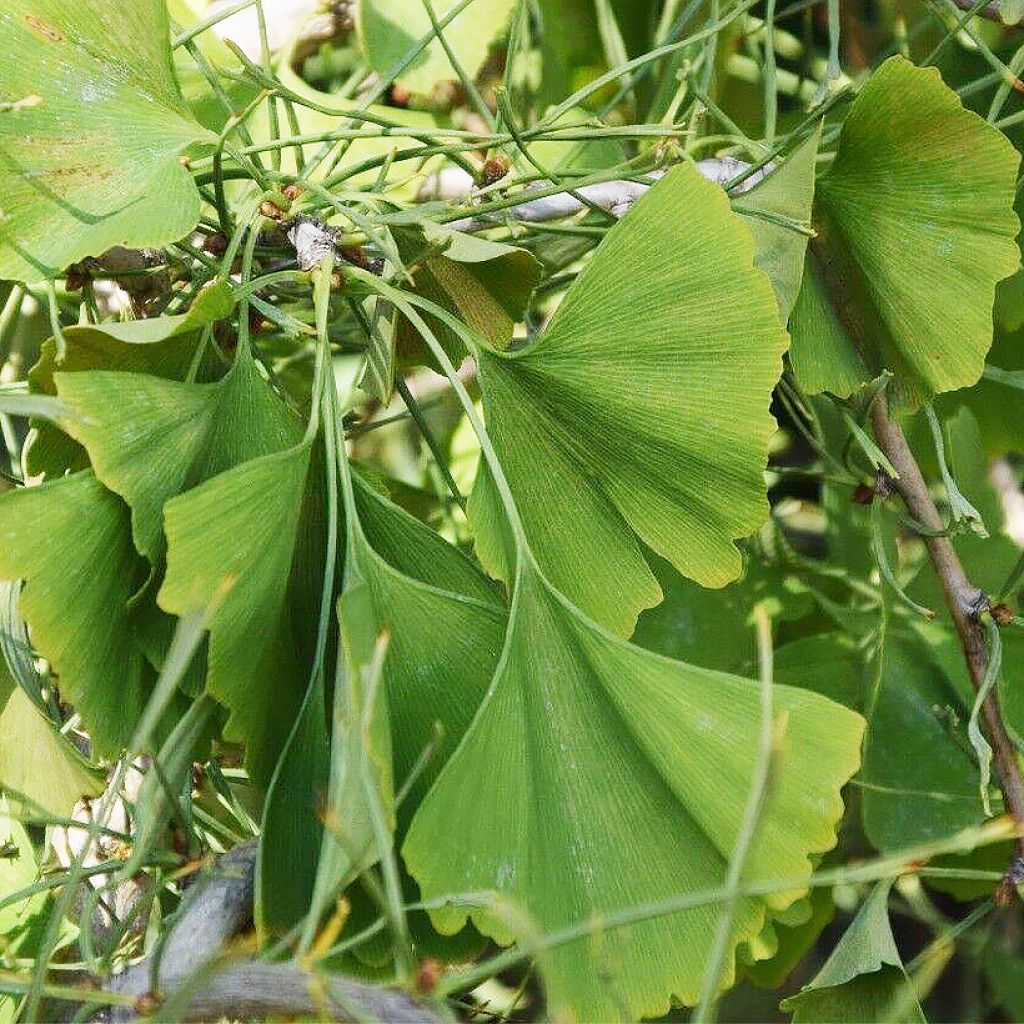

Ginkgo biloba Mutant Weeper
Ginkgo biloba Mutant Weeper
Ginkgo biloba Mutant Weeper
Ginkgo, Maidenhair Tree
Special offer!
Receive a €20 voucher for any order over €90 (excluding delivery costs, credit notes, and plastic-free options)!
1- Add your favorite plants to your cart.
2- Once you have reached €90, confirm your order (you can even choose the delivery date!).
3- As soon as your order is shipped, you will receive an email containing your voucher code, valid for 3 months (90 days).
Your voucher is unique and can only be used once, for any order with a minimum value of €20, excluding delivery costs.
Can be combined with other current offers, non-divisible and non-refundable.
Why not try an alternative variety in stock?
View all →This plant carries a 24 months recovery warranty
More information
We guarantee the quality of our plants for a full growing cycle, and will replace at our expense any plant that fails to recover under normal climatic and planting conditions.
Does this plant fit my garden?
Set up your Plantfit profile →
Description
Ginkgo biloba 'Mutant Weeper', marketed under the names 'Weeping Wonder' or 'Majestic Weeper', is a female variety of Gingko that is truly unique due to the deformed appearance of its vegetation and its small size. It naturally forms an irregular mass that takes on an untidy weeping habit, initially narrow and widening over time. The unusual foliage is composed of leaves of varying shapes and sizes. In autumn, it takes on the beautiful golden-yellow colour that is so appreciated in all ginkgos. The architecture of this small tree is interesting even in winter, when it is devoid of leaves. A botanical curiosity that will make a big impression in a pot on the terrace, near the entrance, or in a small garden! Plant it in full sun, in any good, not too dry garden soil.
Ginkgo biloba, also sometimes called 'Maiden Hair' due to the shape of its leaves and the pattern of its veins resembling capillaries, is a very primitive tree from the ginkgoales family, which is now practically extinct. This living fossil normally reaches a height of up to 24 m and has an upright habit while young, later becoming more spreading, measuring up to 9 m in diameter. This majestic tree, native to China, has now (and probably for a long time) disappeared from its natural habitat, surviving only thanks to humans, who continue to plant and propagate it in their most beautiful parks.
'Mutant Weeper' is originally a witches' broom with a prostrate habit discovered in Springfield, Illinois on a female Ginkgo biloba in the early 2000s by Rich Eyre and Mike Dirksen. It is characterised by random main branches growing in all directions, tortuous weeping branches and slightly thicker leaves, compared to other varieties. Some leaves have large lobes, others are very thin, and still others are truncate. Up to 5 different leaf forms can be observed on a single plant. At the age of 10, a grafted specimen reaches approximately 2 m in height and 60 cm in spread. If ungrafted, the plant reaches 1.20 to 1.50 m high and 1.80 to 2 m wide. The branches grow 15 to 20 cm each year. The deciduous leaves are light olive green in spring, darken slightly in summer, and turn a vibrant golden yellow at the end of the season before falling. As a female variety, 'Weeping Wonder' is capable of producing fruits when in the presence of a male tree. This variety flowers and bears fruit at an early age, around its seventh year according to sources. The female "flowers" are yellow ovules hanging from a peduncle, the size and colour of a mirabelle plum. They fall to the ground, when ripe and emit a very unpleasant odour. This small tree resists urban pollution and severe cold very well.
Ginkgo 'Mutant Weeper' can be planted in a container near the entrance, on the terrace, or as a standalone feature on a lawn, where it will provide a focal point for much of the year. Its form integrates particularly well in Japanese, exotic, or contemporary settings. It can also be paired with Japanese maples of modest size, oakleaf hydrangeas, or purple barberries... It is also a beautiful addition to an urban garden or a rooftop terrace.
Despite its deciduous leaves, Ginkgo biloba is a conifer from a botanical perspective. It is a very hardy and robust tree. It was one of the few trees to survive the atomic bomb in Hiroshima in 1945! It is the oldest tree species found on Earth: dating back 300 million years, it has survived all that the Earth has experienced. This tree has been living for thousands of years in the Tianmushan Mountains in southeastern China. It was reintroduced to Europe in the 18th century. With exceptional longevity, the Ginkgo is also a medicinal plant, with its foliage used to combat the symptoms of Alzheimer's disease.
Plant habit
Flowering
Foliage
Botanical data
Ginkgo
biloba
Mutant Weeper
Ginkgoaceae
Ginkgo, Maidenhair Tree
Ginkgo biloba 'Weeping Wonder', 'Majestic Weeper'
Cultivar or hybrid
Other Ginkgo
View all →Planting and care
The 'Mutant Weeper' Ginkgo Biloba is a very hardy tree, resistant to temperatures as low as -30°C, but it dislikes excessive heat; it suffers beyond 30°C, especially if the soil is dry. It thrives in the sun in any good fertile, deep, and well-drained soil. It is also important to ensure that it does not lack water during the summer period. It tolerates chalky soil as long as it remains moist. In dry soil, this tree will develop very slowly. It will also suffer in soil that is too wet and heavy, constantly saturated with water. It is a very resilient bush that withstands urban pollution well. When planting, dig a deep hole enough hole, rich in humus. During the plant's dormant period, in February-March, you can remove some awkward, too-long, or tangled stems to maintain a satisfactory shape.
Planting period
Intended location
Care
Planting & care advice
This item has not been reviewed yet - be the first to leave a review about it.
Similar products
Haven't found what you were looking for?
Hardiness is the lowest winter temperature a plant can endure without suffering serious damage or even dying. However, hardiness is affected by location (a sheltered area, such as a patio), protection (winter cover) and soil type (hardiness is improved by well-drained soil).

Photo Sharing Terms & Conditions
In order to encourage gardeners to interact and share their experiences, Promesse de fleurs offers various media enabling content to be uploaded onto its Site - in particular via the ‘Photo sharing’ module.
The User agrees to refrain from:
- Posting any content that is illegal, prejudicial, insulting, racist, inciteful to hatred, revisionist, contrary to public decency, that infringes on privacy or on the privacy rights of third parties, in particular the publicity rights of persons and goods, intellectual property rights, or the right to privacy.
- Submitting content on behalf of a third party;
- Impersonate the identity of a third party and/or publish any personal information about a third party;
In general, the User undertakes to refrain from any unethical behaviour.
All Content (in particular text, comments, files, images, photos, videos, creative works, etc.), which may be subject to property or intellectual property rights, image or other private rights, shall remain the property of the User, subject to the limited rights granted by the terms of the licence granted by Promesse de fleurs as stated below. Users are at liberty to publish or not to publish such Content on the Site, notably via the ‘Photo Sharing’ facility, and accept that this Content shall be made public and freely accessible, notably on the Internet.
Users further acknowledge, undertake to have ,and guarantee that they hold all necessary rights and permissions to publish such material on the Site, in particular with regard to the legislation in force pertaining to any privacy, property, intellectual property, image, or contractual rights, or rights of any other nature. By publishing such Content on the Site, Users acknowledge accepting full liability as publishers of the Content within the meaning of the law, and grant Promesse de fleurs, free of charge, an inclusive, worldwide licence for the said Content for the entire duration of its publication, including all reproduction, representation, up/downloading, displaying, performing, transmission, and storage rights.
Users also grant permission for their name to be linked to the Content and accept that this link may not always be made available.
By engaging in posting material, Users consent to their Content becoming automatically accessible on the Internet, in particular on other sites and/or blogs and/or web pages of the Promesse de fleurs site, including in particular social pages and the Promesse de fleurs catalogue.
Users may secure the removal of entrusted content free of charge by issuing a simple request via our contact form.
The flowering period indicated on our website applies to countries and regions located in USDA zone 8 (France, the United Kingdom, Ireland, the Netherlands, etc.)
It will vary according to where you live:
- In zones 9 to 10 (Italy, Spain, Greece, etc.), flowering will occur about 2 to 4 weeks earlier.
- In zones 6 to 7 (Germany, Poland, Slovenia, and lower mountainous regions), flowering will be delayed by 2 to 3 weeks.
- In zone 5 (Central Europe, Scandinavia), blooming will be delayed by 3 to 5 weeks.
In temperate climates, pruning of spring-flowering shrubs (forsythia, spireas, etc.) should be done just after flowering.
Pruning of summer-flowering shrubs (Indian Lilac, Perovskia, etc.) can be done in winter or spring.
In cold regions as well as with frost-sensitive plants, avoid pruning too early when severe frosts may still occur.
The planting period indicated on our website applies to countries and regions located in USDA zone 8 (France, United Kingdom, Ireland, Netherlands).
It will vary according to where you live:
- In Mediterranean zones (Marseille, Madrid, Milan, etc.), autumn and winter are the best planting periods.
- In continental zones (Strasbourg, Munich, Vienna, etc.), delay planting by 2 to 3 weeks in spring and bring it forward by 2 to 4 weeks in autumn.
- In mountainous regions (the Alps, Pyrenees, Carpathians, etc.), it is best to plant in late spring (May-June) or late summer (August-September).
The harvesting period indicated on our website applies to countries and regions in USDA zone 8 (France, England, Ireland, the Netherlands).
In colder areas (Scandinavia, Poland, Austria...) fruit and vegetable harvests are likely to be delayed by 3-4 weeks.
In warmer areas (Italy, Spain, Greece, etc.), harvesting will probably take place earlier, depending on weather conditions.
The sowing periods indicated on our website apply to countries and regions within USDA Zone 8 (France, UK, Ireland, Netherlands).
In colder areas (Scandinavia, Poland, Austria...), delay any outdoor sowing by 3-4 weeks, or sow under glass.
In warmer climes (Italy, Spain, Greece, etc.), bring outdoor sowing forward by a few weeks.






























